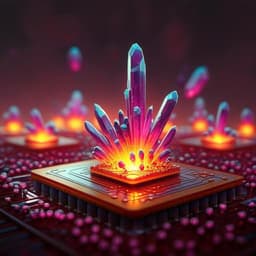
Physics
Inverse orbital Hall effect and orbitronic terahertz emission observed in the materials with weak spin-orbit coupling
P. Wang, Z. Feng, et al.
Explore the groundbreaking research on the inverse orbital Hall effect (IOHE) revealing fascinating orbitronic terahertz emissions in Ti and Mn materials. Conducted by a team from Tiangong University and other notable institutions, this study highlights the potential of manipulating IOHE and the inverse spin Hall effect for developing innovative spin-orbitronic devices and THz emitters.
~3 min • Beginner • English
Related Publications
Explore these studies to deepen your understanding of the subject.







